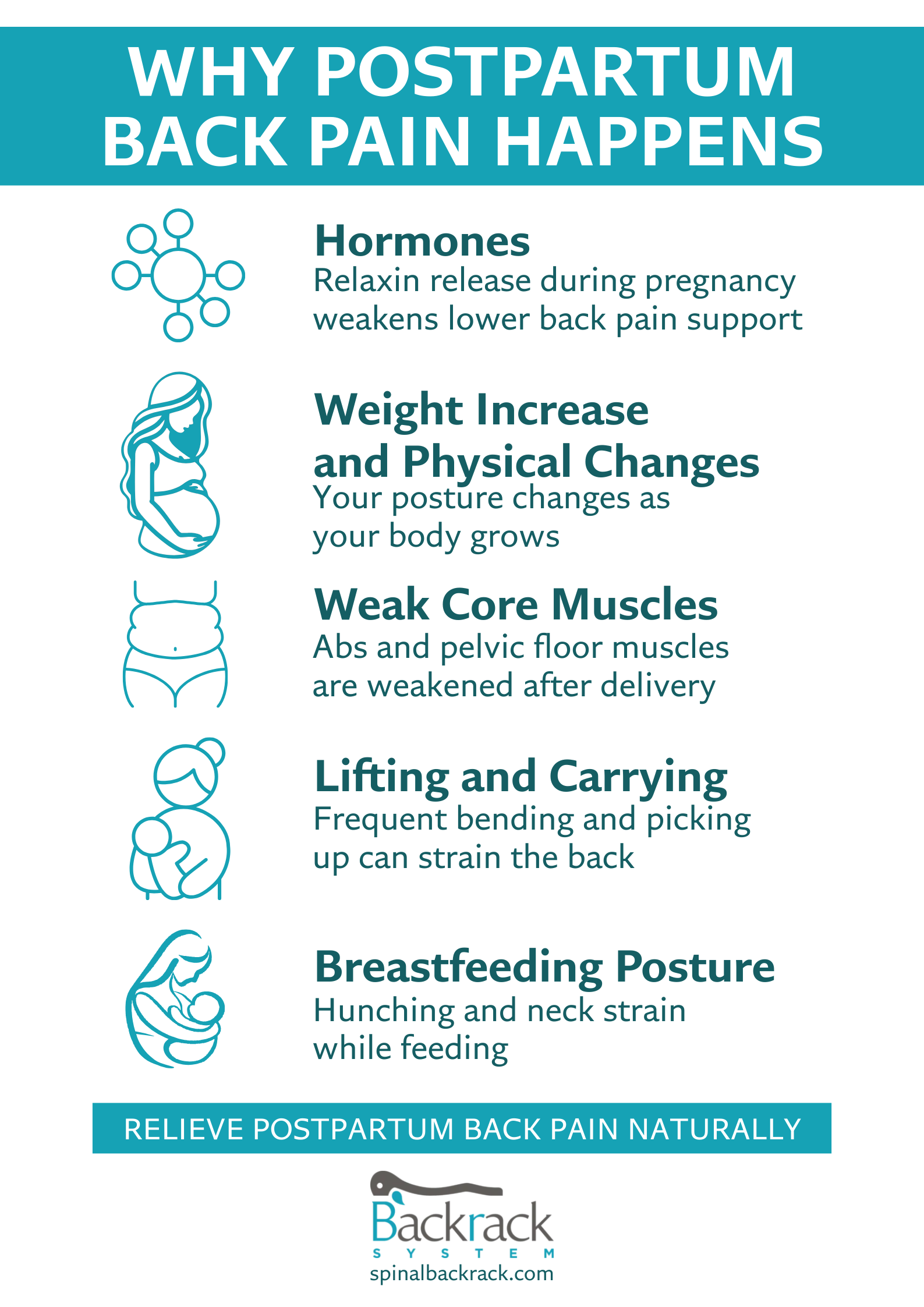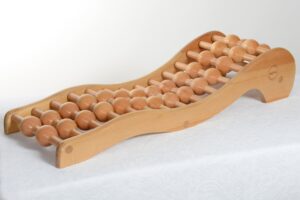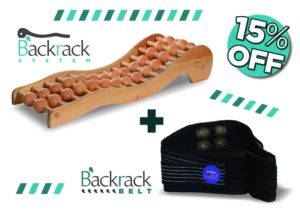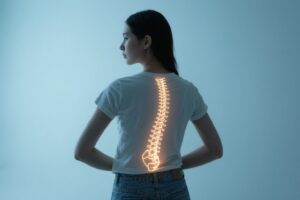
Postpartum back pain is real. If you’ve recently had a baby and your back is constantly aching, you’re not alone. Many new moms deal with ongoing pain after childbirth, and not just for a few weeks. It can last for months if it’s not treated properly.
Your body just went through a massive change. Carrying a baby, going through labor, lifting, feeding, and lack of sleep all take a toll on your spine. And when you don’t give your back proper support and care, the pain sticks around.
Here’s what causes postpartum back pain, what actually helps, and how you can get relief at home without expensive therapy sessions, medication, or surgery.

Back pain after birth isn’t just from labor. It starts during pregnancy and can continue long after. Here’s why:
This all leads to pain in your lower back, between your shoulder blades, or around your neck. Sometimes it even feels like sciatica or hip pain.
It depends. For some moms, it fades within a few weeks. For others, it lasts for months or even years, especially if your body doesn’t get a chance to heal properly.
Ignoring it doesn’t help. If the pain is still there after six weeks, or if it’s getting worse, it’s time to take action.
You don’t need a long list of treatments. You need a few things that actually work. These aid in your body’s healing process and are easy and non-invasive.
It sounds basic, but how you sit, stand, and move matters more than you think. Poor posture adds pressure to your spine.
Even small changes in how you sit or lift can relieve a lot of stress from your back.
A spinal decompression device like the Spinal Backrack can help ease pressure on your spine at home. It works by gently stretching your back, releasing tension, and realigning your vertebrae.
It’s non-invasive, drug-free, and designed by spinal specialists. You can use it for a few minutes a day while lying down no need for appointments or special setups. It’s a practical tool, especially when you’re short on time and energy.
A weak core puts all the load on your spine. You don’t need a full workout. Just a few gentle exercises, done consistently, can rebuild strength and improve support.
Start slowly. These help reactivate your muscles and reduce pain over time.
Tight muscles pull on your spine. Stretching gives you relief and helps you move better throughout the day.
Even five minutes of stretching a day helps.
You lift a lot as a mom, but how you do it makes a difference.
If something feels too heavy, ask for help. Overlifting just makes the pain worse.
Poor sleep makes everything harder. And we know sleep is already rare when you have a baby. But try to give your back proper rest when you can.
And remember: even short naps matter if your body is resting the right way.
Back pain relief doesn’t need to be expensive. Here’s how to care for your back without blowing your budget:
Spending money doesn’t always mean better results. Consistency matters more than cost.
Most postpartum back pain improves with care and time. But sometimes it signals something more serious.
Call your doctor if:
It is best to get checked than to wait and let things worsen.
The best results come from what you do every day not just one-time fixes. Here’s what supports your spine long-term:
Healing your back doesn’t need to be a full-time job. A few smart habits each day go a long way.
Postpartum back pain happens for a reason. Your body went through a lot, and it needs real support, not just rest. Fixing your posture, strengthening your core, using tools like the Spinal Backrack, and avoiding bad movement habits all add up.
You don’t need to wait for the pain to go away on its own. Most of the time it won’t. But that doesn’t mean you need medication or constant appointments either. You can take care of your spine at home with simple, effective steps that fit into your life as a new mom.
You’re already doing a lot. You deserve to feel better while doing it.
You can recover by improving posture, doing gentle core-strengthening exercises, stretching regularly, and using support tools like the Spinal Backrack. These natural methods help your spine heal without relying on medication or expensive therapy.
For some new moms, back pain fades within a few weeks. For others, it can last for months or even years if the spine and core muscles don’t get proper support and care.
Breastfeeding often causes moms to hunch forward and strain their neck and shoulders, which puts pressure on the spine. Using pillows to support your arms and baby, and keeping an upright posture, can reduce pain while feeding.
Innovative spinal care tools like the Spinal Backrack can help naturally relieve postpartum back pain. It works by decompressing your spine, releasing tension, and supporting long-term recovery from the comfort of your home.








Sign up our newsletter to get article update about backrack therapy.